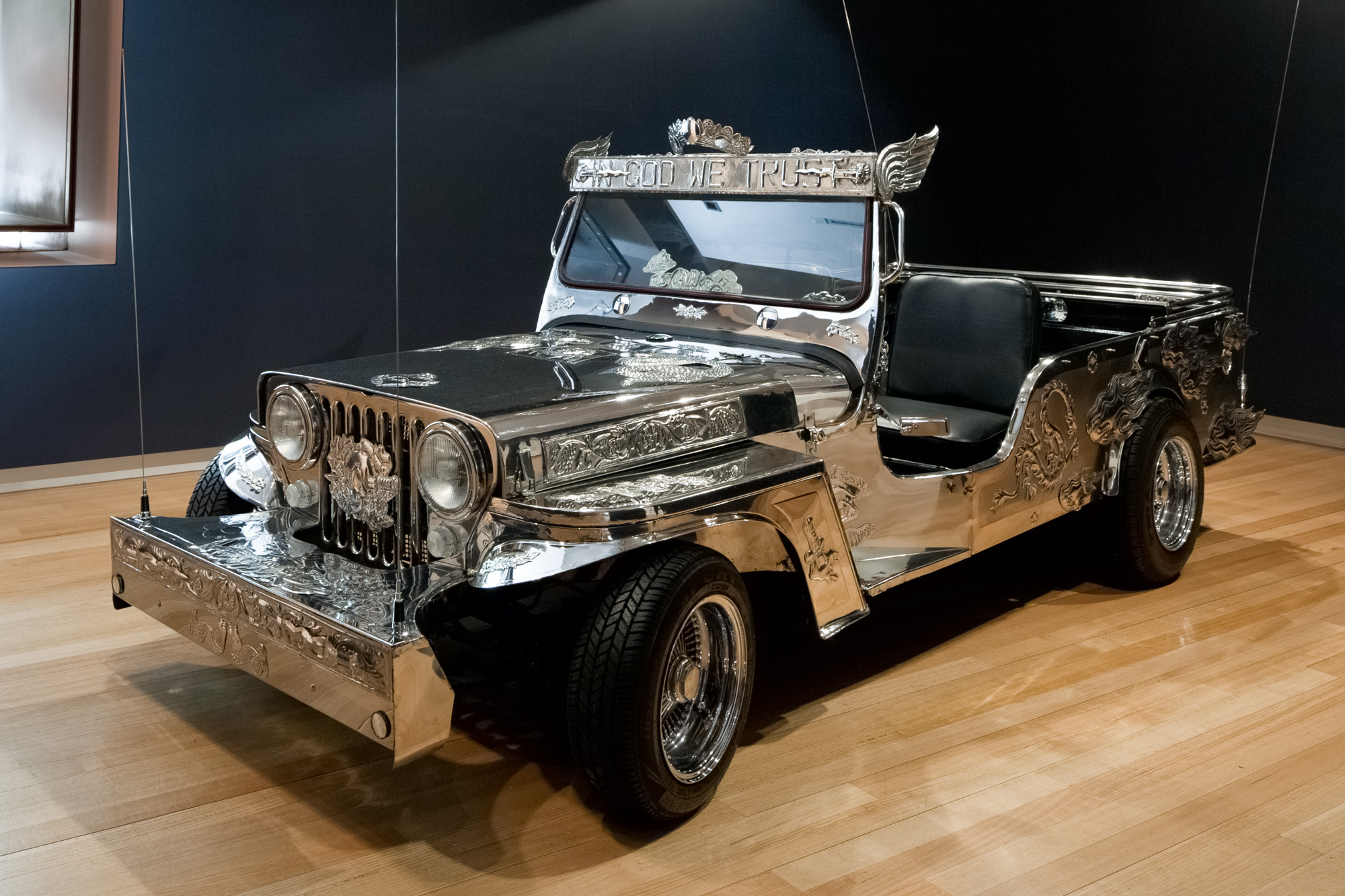One on One: Mark Salvatus on Alfredo and Isabel Aquilizan
By Mark Salvatus

Installation view of ALFREDO AND ISABEL AQUILIZAN’s Project M201: In God We Trust, 2003, stainless steel, video, sound, and domestic objects, dimensions variable, at "Fragments: Another Country," Queensland University of Technology Art Museum, Brisbane, 2013. Photo by Carl Warner. Courtesy the artist and Queensland University of Technology Art Museum.
I was still studying advertising in college in the early 2000s when, one fateful evening, I decided to go to the opening of an art exhibition with my classmates. The show was for a painting competition in Manila and the award ceremony was that night. We were hanging out at a table with some food and drinks when a man came to us with a plate in his hand. He was tall and had long hair. He asked us what we were doing at the opening, maybe because he saw us wearing school uniforms. I told him that we were there to see the exhibition and that we were interested in joining the next painting competition. He said, “you should do installation.” The ceremony started and people gathered in the main hall. He left to talk to other guests, and I continued eating my pica-pica. The man was named Alfredo Aquilizan.
At the time, I was not familiar with the artworks that he makes with Isabel, his partner in art and in life, and I had never heard of installation art in my advertising course at a conservative Catholic university. Though my course was under the fine arts department, I didn’t know much about contemporary art in general. Prompted by Alfredo’s advice, I curiously researched and studied the Aquilizans’ works through brochures and catalogues. I was absorbed by their use of everyday materials and familiar objects. Even though my first encounters with the projects were through printed materials, they immediately clicked with me, stirring connections with my younger self.
I am from the small farming town of Lucban, Quezon, four hours’ drive from Manila to the south. There were no museums and galleries in my hometown when I was growing up; it was through the harvest festival of Pahiyas that I was exposed to creative expression. For the event, each household uses fruits, vegetables, and other readily available local materials to adorn the facades of their homes as an offering for Saint Isidore the Laborer, and for the community to see. The festival is held annually for one day, but the preparation takes weeks or even months. The process leading up to the “show” is an unnoticed yet crucial aspect of the festival—it creates a shared social experience that spreads into the streets and throughout the town, building a communal energy.
The Aquilizans work with traces of people’s everyday lives, including used toothbrushes, odd slippers, old blankets, baby sweaters, and balikbayan boxes. Salvaging these discarded materials that were once extensions of bodies and fixtures of homes, Alfredo and Isabel create spaces for encounters between individuals and communities. Their process of collecting and making entails the participation of various contributors, collaborators, and artisans over time—such intimate engagements are sometimes unnoticed once their works are in gallery spaces. Yet, for them, the process is the assemblage, and the makeshift is a way of life. This, perhaps, is the “installation” that Alfredo told me about. He reminded me of the landscape, tradition, materiality, community, and shared imagination of the place where I come from. My understanding of “installation” in relation to local traditions thus became a key agent in my art practice.
I graduated in 2003 and chose not to pursue a career in advertising. Instead, I started to participate in and organize small art shows in Manila, collaborating with other recent graduates from my alma mater and other schools. I frequented artist-run spaces and became part of Tutok Artists Collective, a loose group of practitioners concerned with history and sociopolitical issues. I met Alfredo again at a show and he gave me a catalogue of his and Isabel’s presentation at the 2003 Venice Biennale. There, they had displayed the installation Project M201: In God We Trust (2003), which includes a stainless-steel replica of an owner-type jeepney, made by expert jeepney welders. The disused military vehicles were refashioned as ubiquitous mass transport across the Philippines after World War II. The Aquilizans highlighted that this transformation does not only recover and repurpose the object but also reconstructs an open space where shared experiences are generated. Their jeepney took me further along my journey in art.
The Aquilizans became my indirect mentors and an “extended” family. I don’t even know if Alfredo remembers our short conversation, but that quick encounter long ago has been tucked in my mind until now. It brought me to installation, which in turn made me aware of and enabled me to express the temporality that we share, as well as our precarious, unfixed positions in this world. Salamat Alfredo and Isabel.
.jpg)






